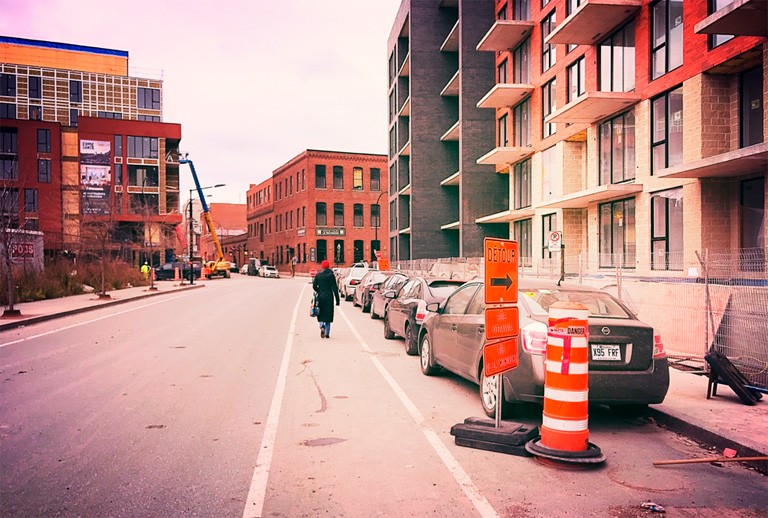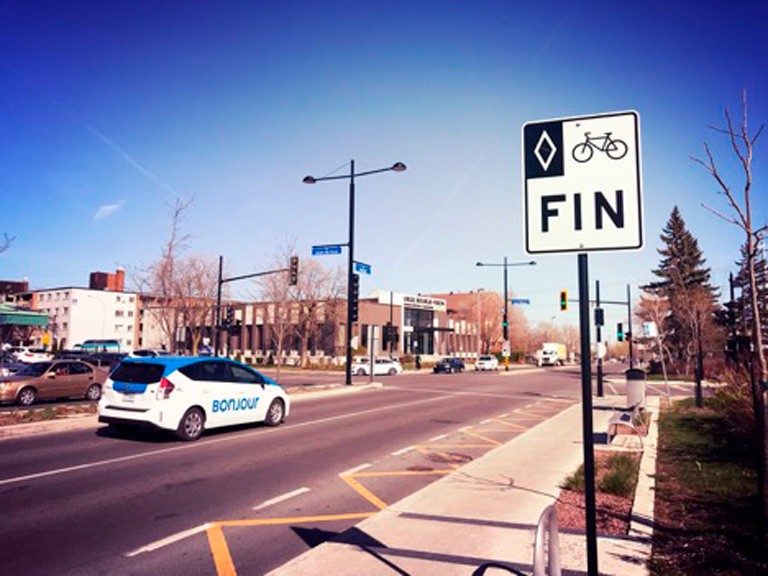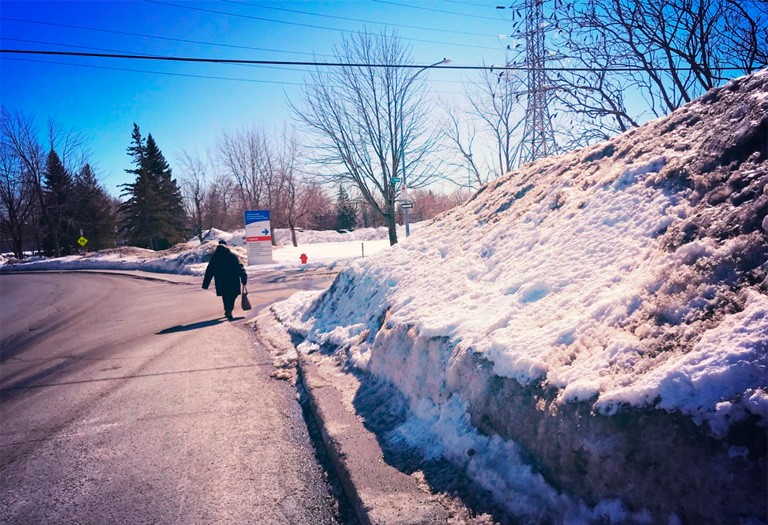Aryana Soliz is a doctoral candidate in Sociology and Anthropology at Concordia University. For twelve years she worked as a project coordinator for various non-profit organizations in Canada and in Latin America. In 2017, she helped co-found the Concordia Ethnography Lab,an interdisciplinary initiative aimed at promoting innovative ethnographic research. Her doctoral research focuses on cycling infrastructures and mobility justice in small and intermediate cities. Her research has been funded by the Social Sciences and Humanities Research Council of Canada.
Blog post
Why is urban mobility becoming such a controversial topic?

From the freshly painted pistes cyclables of Verdun to the endless rush-hour lineups at metro Berri, transportation has become an eminent — and in many cases sensitive — topic in Montreal.
Although transportation infrastructures are often considered a boring research topic (as I discussed in my previous blog post), there seems to be something stirring on the pavement lately that’s getting Montrealers worked up about the perils and politics of urban mobility.
What’s the commotion over cycling lanes about?
Last month, I published an op-ed in the Montreal Gazette about the controversies over the city’s plans to expand and improve cycling lanes. I focused the article on the new pilot project to improve cycling lanes on Verdun St. (and the seasonal removal of 275 parking spaces), which has generated intense debate in my neighbourhood.
Given the backlash against the pilot project from some car advocates, I argued that we should consider the wider benefits of the cycling lanes, including their traffic-calming effects and their ability to help cities meet their environmental goals.
With the help of the Gazette and Concordia’s social media team, I was happy to see that the op-ed generated a lot of discussion and commentary, both positive and negative.
I certainly welcome debate from all angles on the issue. I also want to take the opportunity to further explain some of my points while the debate is still ongoing.
First, I want to clarify that I think that claims about the benefits of cycling lanes (or any other transportation infrastructure), should be made carefully, with attention to local contextual factors.
My emphasis on the benefits of improved cycling facilities in Greater Montreal — and particularly in Verdun — comes from several years of observation and consideration, including: riding year-round throughout the city, witnessing several accidents and near-accidents in Verdun and LaSalle, attending community consultation processes, hearing local families discuss the need for better road safety in the area and meeting city councillors who show a strong commitment to building a more equitable transportation system.
An important aspect of Montreal’s new active-transportation plans is that they aim to provide a wider and more continuous network for cycling, while (at least in some cases) bringing improved cycling facilities to low- and middle-income neighbourhoods.
Members of the Association pour la mobilité active de Verdun conducted an online survey about the pilot project and found that the majority of community members support the new cycling lanes, even many residents who don’t cycle on a regular basis.
While a few business owners are threatening to sue Verdun’s borough council over the seasonal removal of parking spaces, research shows that the installation of bike lanes (even at the expense of car parking) can actually help to boost local businesses.
Several cycling advocates have also expressed concern that Projet Montréal is moving too slowly on its promised 184 km express-cycling network.
Montreal’s bicycle advocates seem to support the idea of building more cycling facilities, but they have expressed disappointment that the city has not yet fulfilled promises to improve cycling conditions in several critical areas (such as the need for cycling lanes on Guy St. between William St. and de Maisonneuve Blvd.).
I certainly agree with local social movements that we need to carefully monitor the city’s progress in improving active-transportation facilities and to hold municipal leaders accountable to their elections promises.
I also argue that more attention is needed in underserved neighbourhoods such as LaSalle, where road conditions are extremely dangerous and proper cycling and pedestrian infrastructures are sorely lacking in many areas.

Why are we seeing more and more cars on Montreal’s roads?
Another controversial aspect of Montreal’s transportation landscape relates to the city’s rising C02 emissions and failure to meet its environmental goals. As discussed in my op-ed last month, transportation emissions have been a major impediment for Montreal’s attempt to meet its 2020 target for greenhouse gas emissions reductions.
A recent progress report explains that household car ownership has risen sharply in Montreal, while public transit ridership has stagnated.
So what’s causing this huge increase in car use, precisely at a time when the city is pledging to improve more sustainable forms of transportation?
While considering the topic from multiple angles, we also need to be cautious with claims that the growth in motor vehicle use is a simple matter of consumer preferences.
Authors such as Zach Furness have warned against this type of assumption, arguing that consumer yearnings on their own have not “built the roads, lobbied the government, zoned the real estate, silenced the critics, subsidized auto makers, underfunded public transit, and passed the necessary laws to oversee all facets of these projects…”
Evidently, some residents prefer to use motor vehicles and would like for the city to better facilitate car travel. However, we also need to acknowledge the role of powerful lobbying interests (particularly the car industry and oil conglomerates) who have invested an enormous amount of resources in the production, marketing and sales of automobiles as well as the ongoing development of motor vehicle infrastructures.
A piece of the puzzle in Montreal is also undoubtedly seasonal, given that cycling, walking and even public transport can become more complicated and uncomfortable in the winter.
Yet many cyclists and pedestrians in Montreal want to engage in active transportation year-round but find that the road conditions become overly dangerous in the winter months.
As shown in the photo below, taken near LaSalle hospital, snowplowing for car traffic generally takes first priority in the winter — leaving many sidewalks completely covered in mounds of snow — and pedestrians without a safe walkway.

I also believe that a crucial aspect of this dilemma relates back to the need for wider and more continuous networks for cycling, walking and public transport.
Some of my students have explained that they would prefer to commute to Concordia via public transit, but they become dependent on car travel because of slow and unpredictable transit options in areas such as Montreal’s North and South shores.
A number of researchers argue that cities must make concerted, year-round efforts to provide safe and wide-reaching facilities for pedestrians, cyclists and public transit users in order to effectively promote alternatives to car use.
So, while we keep the debate on urban mobility open to discussion from multiple perspectives, let’s also make sure that the squeakiest (car) wheels don’t get all the grease.
About the author


